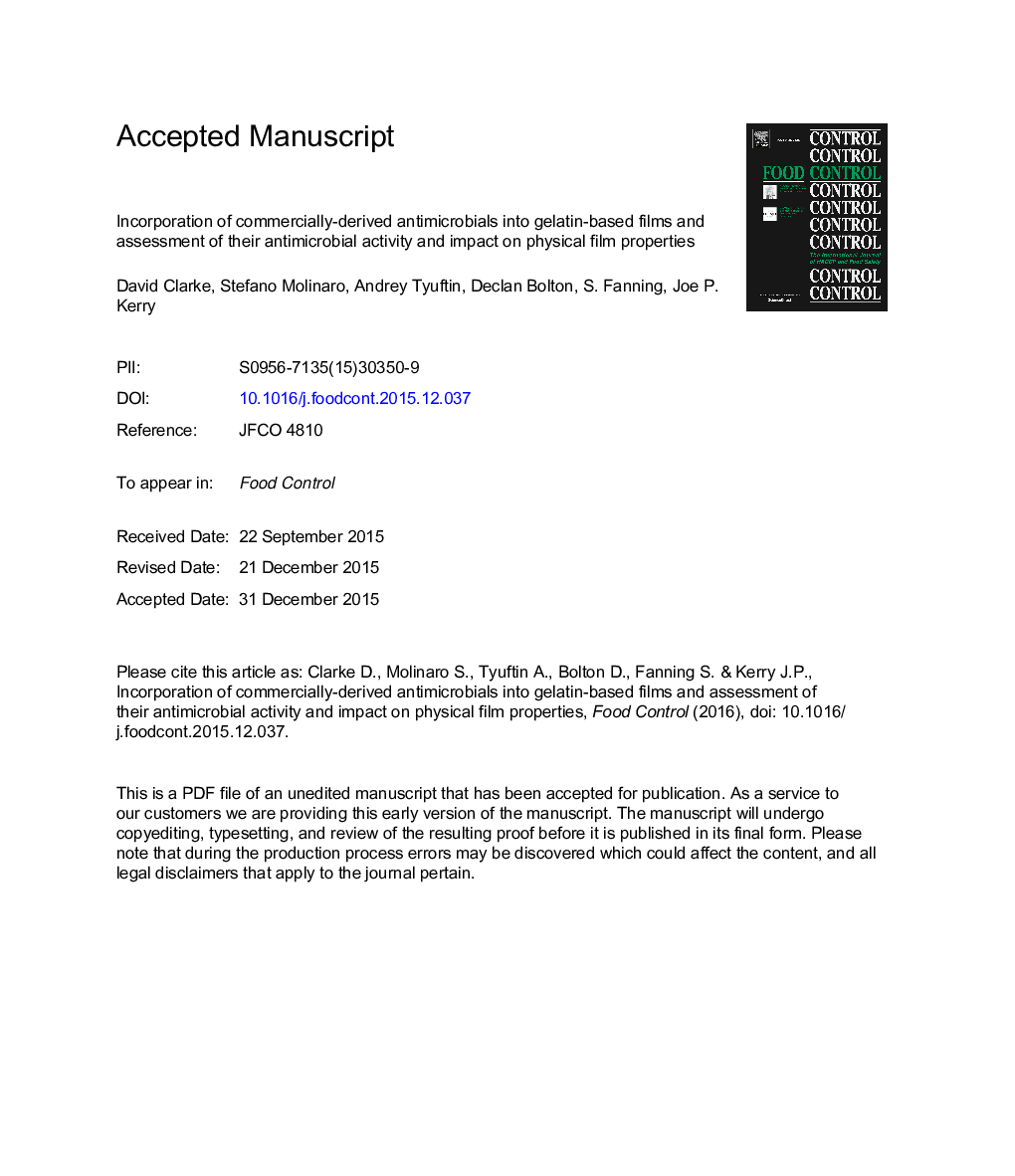| Article ID | Journal | Published Year | Pages | File Type |
|---|---|---|---|---|
| 6390193 | Food Control | 2016 | 34 Pages |
Abstract
Four antimicrobials, namely; Articoat DLP 02 (AR), Artemix Consa 152/NL (AX), Auranta FV (AFV) and sodium octanoate (SO) were examined for their effectiveness, both before and after heat treatments, against bacterial strains Bacillus cereus, Pseudomonas fluorescens, Escherichia coli, Staphylococcus aureus and the microflora obtained from commercial beef steaks. Minimum inhibitory concentrations (MIC) using AR, AX, AFV and SO against these microbes were then obtained using the 96-well plate method. SO was the most effective against all bacterial strains, demonstrating the lowest MIC compared to the other antimicrobials. These antimicrobials were then successively incorporated into beef-derived gelatine films and these films were subsequently tested for structural, mechanical and barrier properties. Significantly (p < 0.05) enhanced water vapour barrier properties were determined only for antimicrobial films containing AX or SO when compared to control films. On the basis of FTIR spectra, significant changes in the structure of SO-containing films were determined when compared with control gelatin films. It was shown that active antimicrobial agents could potentially serve as commercial antimicrobial coatings for application onto conventional plastic-based food packaging.
Related Topics
Life Sciences
Agricultural and Biological Sciences
Food Science
Authors
David Clarke, Stefano Molinaro, Andrey Tyuftin, Declan Bolton, S. Fanning, Joe P. Kerry,
